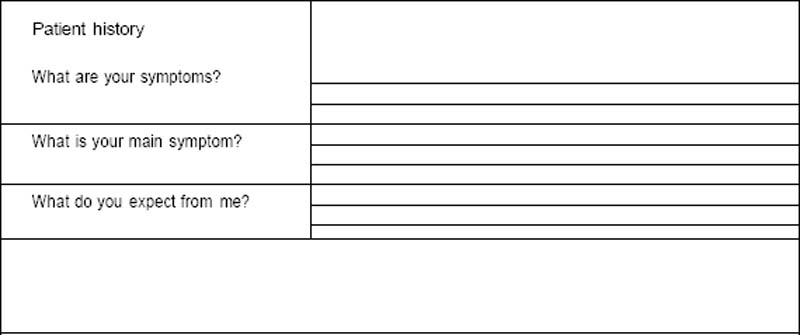Primary Dental Evaluation
The dental examination is the conditio sine qua non for arriving at a correct diagnosis and effective dental treatment plan. Every case in which a patient complains of craniofacial pain requires a thorough gathering of information on the status of the teeth, periodontium and mucous membranes, even when there appears to be no connection between the reported complaints and the “typical” toothache. Beware of a superficially conducted “quick diagnosis” which always increases the risk that essential findings and secondary factors will be overlooked, incorrectly evaluated, or forgotten, especially when they seem to bear no apparent relationship to the patient’s reported symptoms.
Strictly speaking, the examination begins with the first visual and verbal contact with the patient (physiognomy, skin and facial coloration, posture, gait, speech etc.) Even if not all the information is germane to the dental diagnosis, it is the dentist’s duty to identify, to the best of his or her ability, any symptoms that might indicate a systemic illness and to motivate the patient to seek an evaluation from an appropriate specialist (Kirch 1994).
There are various techniques for eliciting and documenting a case history. It is recommended that patients first be allowed to begin describing their history of illnesses in their own words. Because the description of previous illnesses usually proceeds at an irregular pace, after a period of time determined on an individual basis, the caregiver should politely interrupt the patient’s monologue and conduct the consultation further by asking concrete questions concerning the primary and secondary symptoms. Under no circumstances should these questions be leading or suggestive. The diagnosis, treatment plan, and success of the treatment are dependent upon correct interpretation of the findings and therefore upon the knowledge and experience of the clinician. A frequent mistake is the failure to discuss not just the physical, but also psychological conditions as possible etiological factors, especially in cases with ambiguous, indistinctly localized complaints in the face and jaws (Marxkors and Wolowski 1998).

10 Special patient-history excerpt from the questionnaire “Manual Functional Diagnosis”
Findings in the Teeth and Mucous Membrane
The intraoral evaluation includes in particular:
• careful evaluation of the mucous membranes
• determination of the status of the teeth, including detection of caries and periodontal disease
• a search for signs of occlusal disturbances and parafunction (abrasion, wedge-shaped defects, enamel cracks and fractures, and increased tooth mobility) and
• evaluation of the function of fixed and removable partial dentures and orthodontic appliances.
Stay updated, free dental videos. Join our Telegram channel

VIDEdental - Online dental courses


